I’ve been visiting the Royal Horticultural Society’s garden at Rosemoor in Devon, UK, for 20 years or more now. Over that time I’ve seen many changes, some grand and some subtle.
Best of all I’ve been able to enjoy the sight of trees growing and maturing. On my very first visit I fell in love with the remarkable Chamaecyparis lawsoniana ‘Imbricata Pendula’, a form of the Lawson Cypress familiar to many readers but with long thread-like growth and a curious weeping habit.
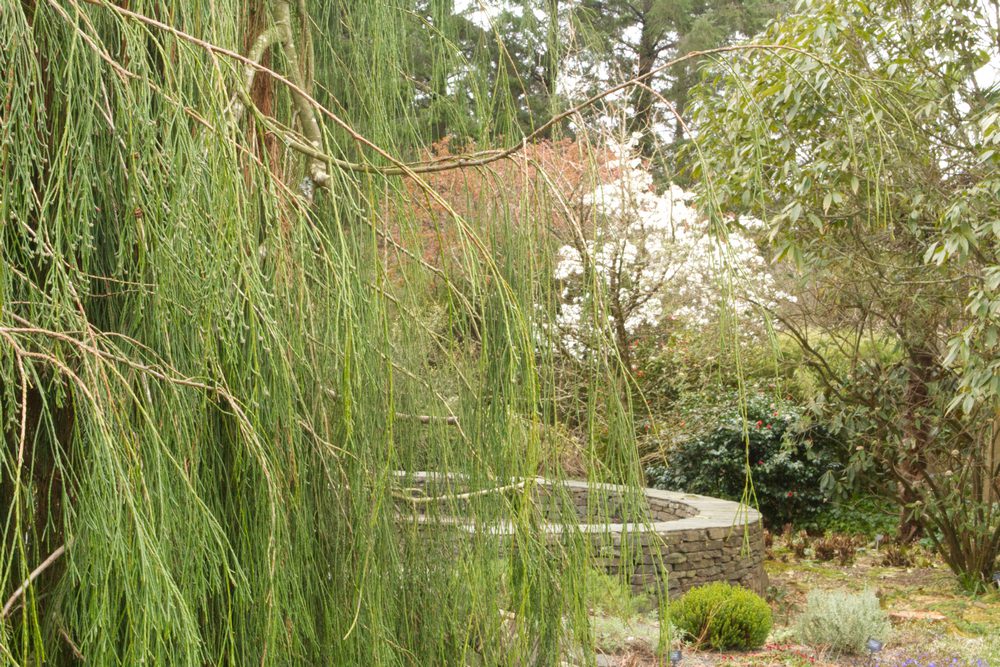
Weeping branches and thread-like foliage; what’s not to like?
I’ve visited this tree on every visit, but more recently it’s become obvious that this tree hasn’t been well. It was sad but unsurprising to see my beloved tree had been felled.
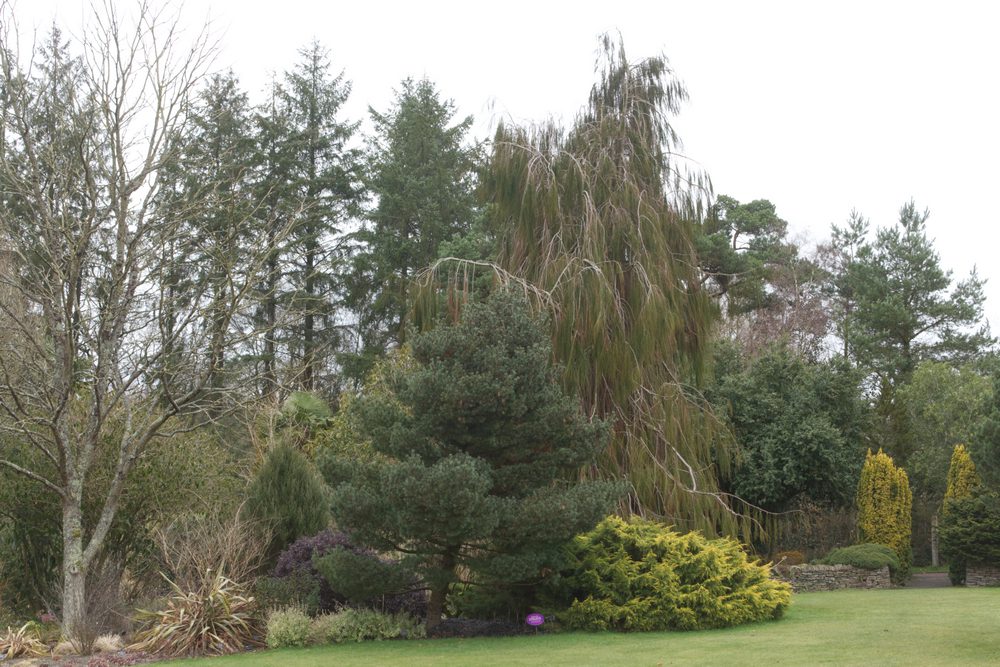
A picture taken on a gloomy day, but you can see a brown hue to what should be a green tree
Cause Of Death
This tree was killed by love.
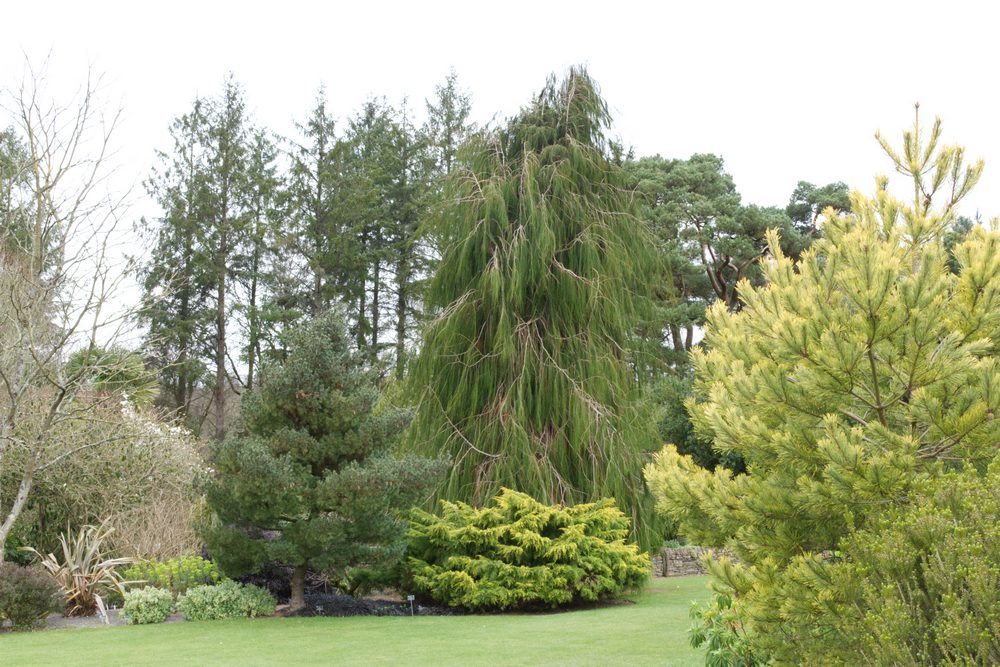
My favourite tree in healthier times
Or more accurately the expression of love. I’ve joined countless visitors to touch, admire and photograph this special tree, but over time this foot traffic has caused compaction issues around the roots; the all-important air gaps that allowed water to drain through the soil have been broken down by persistent foot traffic.
Could this loss have been avoided?
Yes. Compaction issues are well known and understood in horticulture, and have been for a long time. Some plants, conifers and Rhododendrons for example, are particularly susceptible as they have fairly shallow root systems.
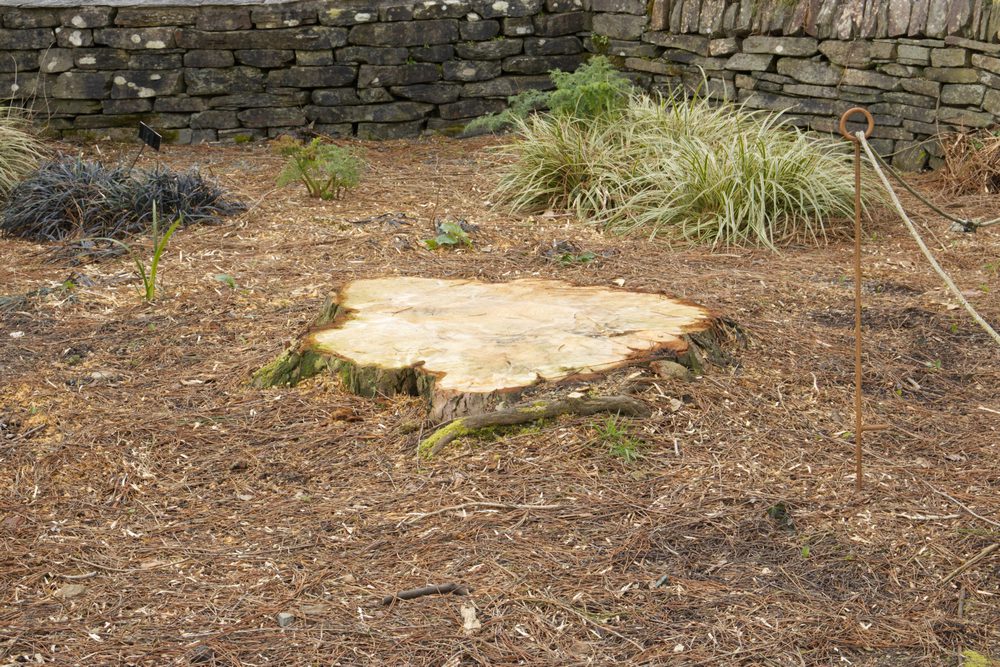
Never a good sight
A tree that receives a lot of foot traffic, which is to say a tree near a main thoroughfare or a tree that people want to see up close (low branches with interesting foliage or pretty flowers etc) is going to be at a higher risk of compaction issues than a remote or less popular tree.
Why Not Act?
There are various options to protect trees, the best of which is to stop people from getting too close.
The problem is that barriers annoy people; if visitors feel as though they’re being restricted they tend to become agitated. Bad reviews are all too common for gardens, and can be very damaging.

Some plants need a bit more protection from marauding visitors
Gardens have been quietly gearing themselves toward to ‘visitor experience’ rather than ‘horticultural integrity’. It’s irritating for me but is a sad sign of modern times. I would prefer gardens to protect their assets, the plants that I enjoy, but putting up fences and signs makes people feel unwelcome, which in turn reduces income, which in turn endangers jobs and possibly the future of the garden itself.
Not All Doom And Gloom
I’m delighted to say that I’ve been visiting other gardens in my area, and even more delighted to tell you that I’ve found a couple of other examples of my favourite tree from Rosemoor.

Chamaecyparis lawsoniana ‘Imbricata Pendula’ at Marwood Hill in Devon, UK
They’re not as nicely shaped, but they’re also not as accessible. I can be confident that these trees won’t suffer from the excessive devotion of the Rosemoor tree. Even if these gardens, Marwood Hill and The Garden House, had Rosemoor’s visitor numbers these trees would be safe from compaction issues.
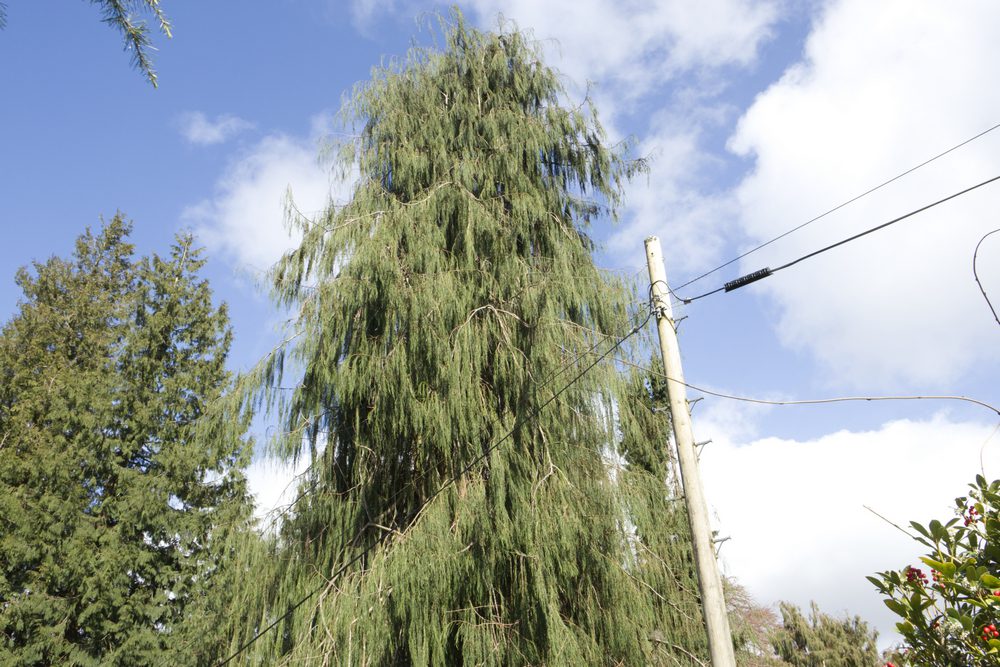
Chamaecyparis lawsoniana ‘Imbricata Pendula’ at The Garden House, Devon, planted a bit too close to cables
However their future is not entirely safe. It’s become fashionable to hate conifers in British gardening circles; I just hope that nobody decides to fell these trees because they’re not ‘the right sort of tree’.

